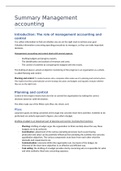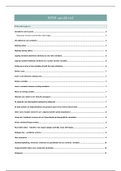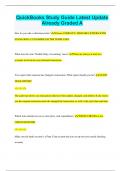Resume
Summary management accounting English I
- Cours
- Établissement
This summary is about management accounting, which has the main focus on different kind of costs in a business. Refers to management accounting English, International Finance & Control.
[Montrer plus]






